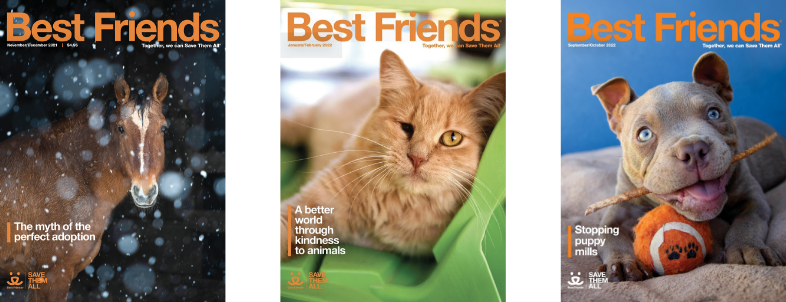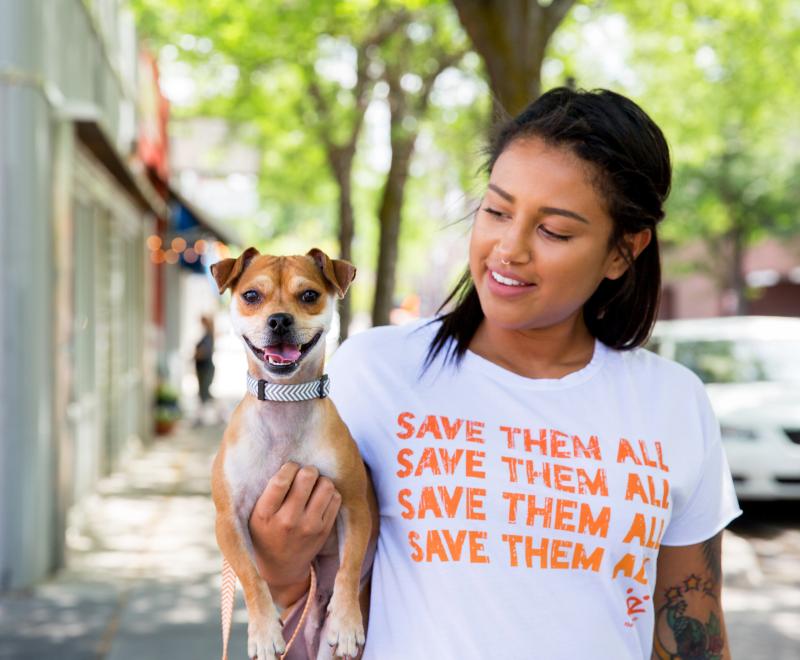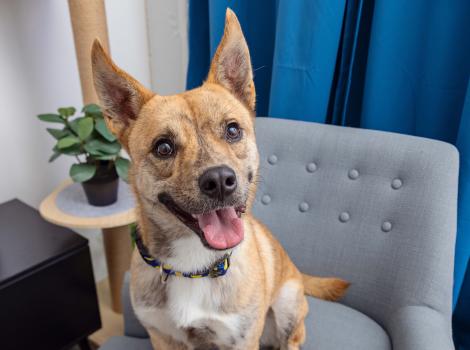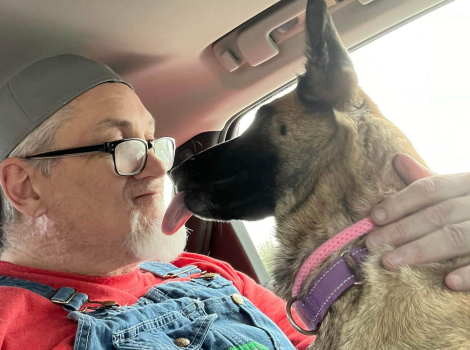A mustang’s breakthrough

Byron has come such a long way since he arrived at Best Friends Animal Sanctuary in the winter of 2021. The compact little mustang has gained confidence, and the worried, tense expression has melted from his face. He has easy access to food and water every day, and he’s learning all about what it means to live in a human’s world.
Byron spent his first five years in the wild, where life can be challenging. The high-desert climate is harsh, food and water are scarce, and predators are ever-present. Byron survived by reacting without thinking, which kept him alive but made it difficult for him to be around people. To acclimate to life around humans, Byron would have to overcome many of the instincts he’d honed during his life in the desert.

Horse and trainer learn new ways
Equine trainer Christian Mathews has a similar story. He grew up around horses, learning the methods taught by his grandfather for cowboying and ranching. He says he wanted to work at Best Friends’ Horse Haven to learn a gentler, more compassionate way to handle horses. That’s how he met Byron.
[Curly-coated horse gets a personal trainer]
Christian learned to interact with horses in a whole new way. For example, it’s better to go too slow than too fast. Getting Byron comfortable with saddling took months, but that’s what he needed to feel safe. “The way I was raised to train horses, the saddling process took one to two weeks,” Christian says. But just as Byron was beginning to let go of tension, Christian was learning to manage his expectations — to allow the horse to think rather than taking shortcuts to get the desired behavior.
“This method trains the mind before the body, which results in the horses not doing things as fast as other methods,” explains Christian. “But when they do them, they are confident, composed and relaxed.”

Byron becomes a riding partner
Now Byron has progressed to being ridden, and while it’s still new to him, he’s proving how capable he can be as a riding partner. He’s even helping other horses in their training. Recently, Christian went on a trail ride with a staff member who was riding another horse. The other horse was scared and nervous. So they put Byron in front and let him lead. Taking cues from Byron, the other horse began to calm down.
[Back in the saddle with adopted Arabian, mustang]
“He went from being an emotional wreck to being other horses’ emotional support blanket.” Watching this transformation, Christian says, has been “an incredible experience.” He says the most important lesson Byron has taught him is to have faith in the process, be patient, and allow the relationship between horse and handler to grow naturally.
As for Byron? “We’re going to keep working with him in a slow and compassionate way,” Christian says. “If we keep that up with him, or with any horse we work with, the sky is the limit.”

This article was originally published in the November/December 2023 issue of Best Friends magazine. Want more good news? Become a member and get stories like this six times a year.
Let's make every shelter and every community no-kill by 2025
Our goal at Best Friends is to support all animal shelters in the U.S. in reaching no-kill by 2025. No-kill means saving every dog and cat in a shelter who can be saved, accounting for community safety and good quality of life for pets.
Shelter staff can’t do it alone. Saving animals in shelters is everyone’s responsibility, and it takes support and participation from the community. No-kill is possible when we work together thoughtfully, honestly, and collaboratively.







